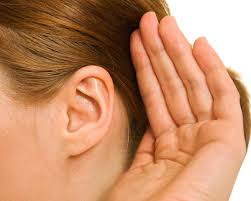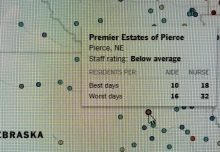 From 2002 to 2011, actor Paul Marcarelli was the voice for Verizon pitching their cellular communications with the simple question, “Can you hear me now?” When that contract ended, Marcarelli was approached by the carrier Sprint who asked him to change his tune to “Paul Switched.” But the inability to hear clearly and consistently is much more than a business proposition. Hearing loss affects as many as 48 million Americans to some degree. And only one-fifth of those who could benefit from a hearing assistive device actually use one.
From 2002 to 2011, actor Paul Marcarelli was the voice for Verizon pitching their cellular communications with the simple question, “Can you hear me now?” When that contract ended, Marcarelli was approached by the carrier Sprint who asked him to change his tune to “Paul Switched.” But the inability to hear clearly and consistently is much more than a business proposition. Hearing loss affects as many as 48 million Americans to some degree. And only one-fifth of those who could benefit from a hearing assistive device actually use one.
Of course, the first line of defense is to protect your or your loved one’s hearing by avoiding extreme noise or by blocking it out, and this “technology” – disposable ear plugs – was patented over a century ago, 1914. Hearing loss is an acute problem for older adults with one in three individuals between 65 and 74 years of age having some degree of hearing impairment, and half of those over 75 have difficulties hearing. Men surpass women with hearing challenges in their middle years, but as they age women and men have very similar rates of loss. While most hearing loss is in the upper ranges of sound, women tend to lose more of the lower registers as they age and “catch up” to men in their incidence of loss.
Ear infections are the most common source of hearing difficulties among children, but among older adults hearing loss is more often linked to cognitive decline and even depression. Heart disease and diabetes are also tied to hearing loss. Prolonged or consistent exposure to loud and sustained noise are the greater sources of hearing loss among most individuals.
Yet, many individuals, especially older loved ones, may resist getting their hearing tested, let alone actually use assistive devices for all the stigma attached to them. We have come a long way since the days of the “ear horn” or more recently the large, hang over the back of the ear devices. There are hearing devices so small and they so easily fit within the outer ear canal that their manufacturers call them “invisible.” If you have an older loved one in your orbit, encourage them to seek assistance from any of the professional diagnostic facilities available. Ask your loved one’s primary care provider for a referral, or even go to this site to find a testing and equipment center in your community.
It’s never too young if you have a child in your orbit to teach them healthy “ear hygiene,” like a bit less volume with their favorite music and perhaps quiet time outs for reading a book … with maybe even a trip to the library. Remember that our younger generation also learn more from what they see us do than from what we tell them!
Charlotte Bishop is a Caregiver Coach, an Aging Life Care Advisor, a Geriatric Care Manager and founder of Creative Care Management, certified professionals who are geriatric advocates, resources, counselors and friends to older adults and their families in metropolitan Chicago. She also is the co-author of How Do I Know You? A Caregiver’s Lifesaver for Dealing with Dementia.





